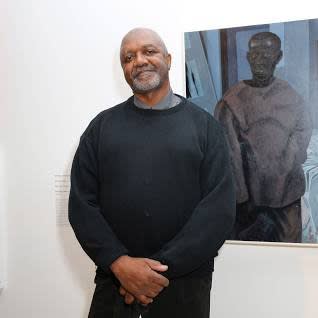Kerry James Marshall US, b. 1955
“Everything I do is based on my understanding of art history,” he told me recently. “The foundation of art as an activity among human beings has always been some form of representation, and there isn’t a mode of art-making that I haven’t explored, and put into use when it was necessary.”
- Kerry James Marshall
"For the first thirty years of his career, Kerry James Marshall was a successful but little known artist. His figurative paintings, drawings, sculptures, photographs, and videos appeared in gallery and museum shows here and abroad, and selling them was never a problem. He won awards, residencies, and grants, including a MacArthur Fellowship in 1997, but in the contemporary-art world, which started to look more closely at Black artists in the nineties, Marshall was an outlier, and happy to be one. He had an unshakable confidence in himself as an artist, and the undistracted solitude of his practice allowed himto spend most of his time in the studio. The curator Helen Molesworth told me that during the three years it took to put together “Mastry,” Marshall’s first major retrospective in the United States, which opened in 2016 at the Museum of Contemporary Art Chicago and travelled to the Metropolitan Museum of Art and the Museum of Contemporary Art, Los Angeles, “there were still people in the art world who didn’t know who he was.”
This is no longer the case. The exhibition outed Marshall as a great artist, a virtuoso of landscape, portraiture, still-life, history painting, and other genres of the Western canon since the Renaissance. The return to figurative art in the past two decades has been embraced by a new wave of younger Black artists, and for many of them, it is now clear, Kerry James Marshall has been a primary inspiration. “Kerry’s influence expands so far beyond his own project,” Rashid Johnson, who at forty-three is one of the strongest voices in contemporary art, told me. “He’s an electric and dynamic thinker who’s also had an enormous influence on those of us who use abstraction and more conceptual approaches. There are two artists without whom I probably would not have become one—David Hammons and Kerry James Marshall.”
Please read the rest of this article in The New Yorker.


